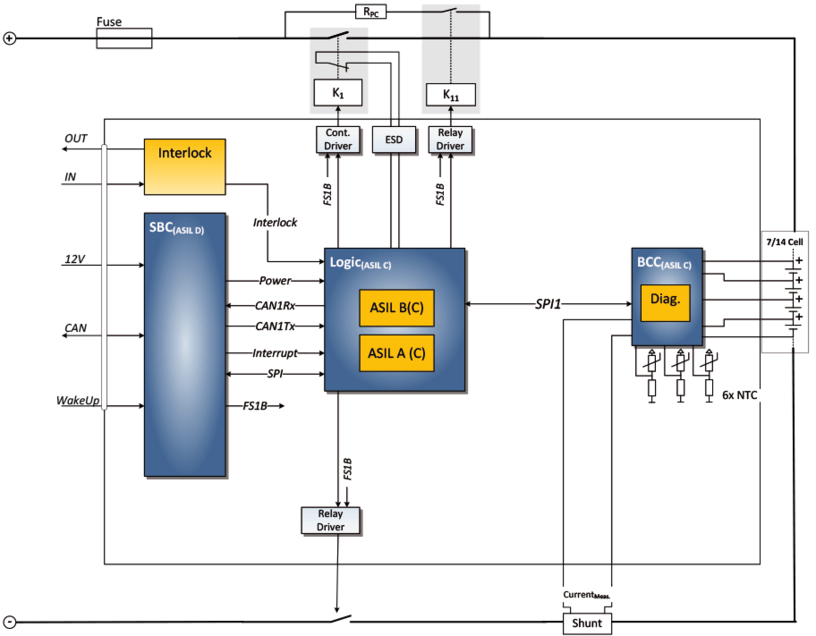
NTBatteryManagementSystem 48V
Development platform for Battery Management Systems in compliance to ISO 26262 ASIL C
NTBatteryManagementSystem 48V is an e-mobility ready to use design and complete safety support package for Battery Management Systems. It is based on a modular approach: a functional safety System-on-Module and a Battery Management System (BMS) application module.
The NTBMS module platform is designed for systems with high demand on reliability and safety targeting ISO 26262 ASIL C. ASIL D is reachable with some architectural improvements.
Customer benefits
- Accelerate time to market
- Reduction in costs for development and certification
- Safety Development Plattform for BMS
Typical applications
- Automotive BMS for Starter Battery with Li-Ion battery
- Automotive BMS for Auxillary Battery
- Smart Grid BMS
- Other BMS opportunities (medical, eBike, light transportation, industrial)
System overview
The Battery Management System of Li-Ion battery includes cell monitoring, current sensing, passive cell balancing, battery breaker control, computation unit for Battery parameter extraction and communication to other ECU through LIN or CAN.
Battery management systems are responsible to monitor and control low- and high-voltage batteries on Li-Ion technology of Electric and Hybrid Electric Vehicles. This control unit is essential since several battery cells are unified to a cluster to enhance battery capacity. Lithium-Ion batteries require a prevention of voltage fluctuation during the process of battery charging. Thus BMS are essential to monitor state of charge, load distribution, temperature of each battery cell as well as of the whole battery package and development of the charging capacity.

Key features
- Overcurrent protection
- Overcharge protection
- Overtemperature protection
- Overvoltage protection
- Undervoltage (short circuit) protection
- Unintended relay close protection
- Unintended relay open protection
- Crash detection
Battery Characteristics
- Intrusive diagnostics (performed by MCU)
- Memory storage (RAM & flash)
- Power management (low power and normal mode)
- CAN for the auxiliary battery
